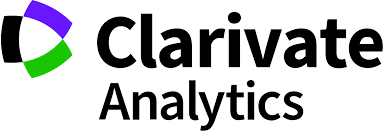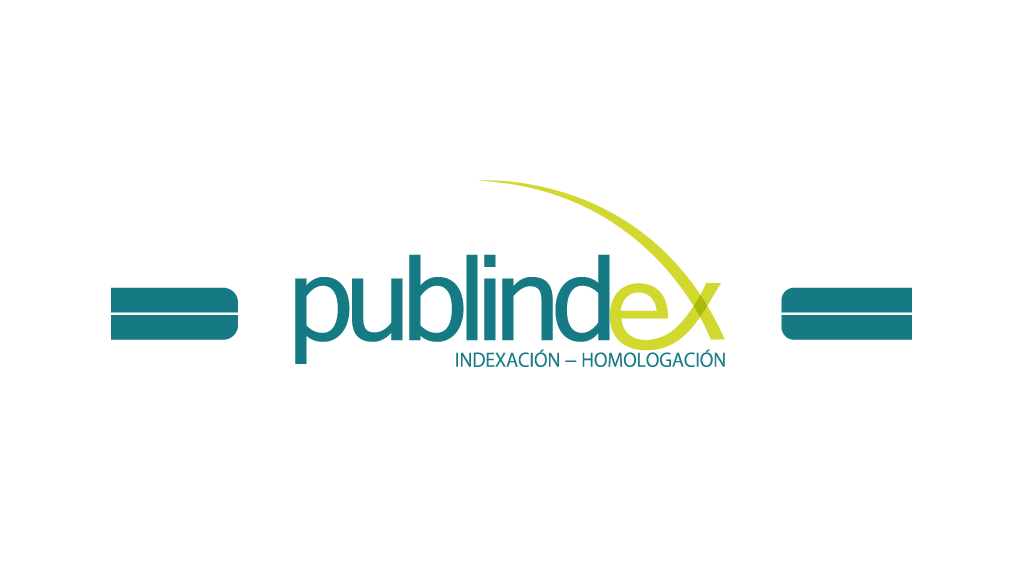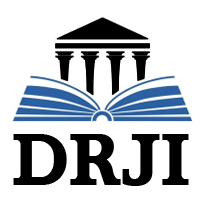
This work is licensed under a Creative Commons Attribution-NonCommercial-ShareAlike 4.0 International License.
Authors who publish in this journal agree to the following terms:
Acta Colombiana de Psicología complies with international intellectual property and copyright laws, and particularly with Article No. 58 of the Political Constitution of Colombia, Law No. 23 of 1982, and the Agreement No. 172 of September 30, 2010 (Universidad Católica de Colombia Intellectual Property Regulation).
Authors retain their copyright and grant to the Acta Colombiana de Psicología the right of first publication, with the work registered under Creative Commons attribution license, which allows third parties to use the published material, provided they credit the authorship of the work and the first publication in this Journal.
Abstract
The aim of this study was to observe the effect of the variables educational level and young adulthood on the attentional networks task. Fifty-eight people from the general population were divided into groups of students and non-students, and in emerging and early adulthood, with whom an experimental design was carried out, using the Attentional Networks task as the main paradigm. The results showed that the student and non-student groups did not differ in performance in any of the network conditions, but regarding the young adulthood variable, there was an interaction effect between the type of adulthood and the orienting network, with the emerging adult group being faster than the early adult group. In addition a correlational analysis showed that age was moderately and positively correlated with reaction time for all attentional task conditions. In the end, the importance of higher education level and young adulthood on the functioning of attentional networks in the field of differential psychology is discussed, and the implications of these results in the clinical setting are mentioned.

References
Arnett, J. J., Žukauskiene, R., & Sugimura, K. (2014). The new life stage of emerging adulthood at ages 18- 29 years: Implications for mental health. The Lancet Psychiatry, 1(7), 569-576. https://doi.org/10.1016/ S2215-0366(14)00080-7
Balluerka, N., & Vergara, A. I. (2002). Diseños de Investigación Experimental en Psicología. Prentice-Hall.
Blakemore, S. J., & Choudhury, S. (2006). Development of the adolescent brain: Implications for executive function and social cognition. Journal of Child Psychology and Psychiatry and Allied Disciplines, 47(3-4), 296-312. https://doi.org/10.1111/j.1469-7610.2006.01611.x
Boen, R., Ferschmann, L., Vijayakumar, N., Overbye, K., Fjell, A., Espeseth, T., & Tamnes, C. (2021). Development of attention networks from childhood to young adulthood: A study of performance, intraindividual variability and cortical thickness. Cortex, 138, 138- 151. https://doi.org/10.1016/j.cortex.2021.01.018
Bonnet, M. C., Dilharreguy, B., Allard, M., Deloire, M. S. A., Petry, K. G., & Brochet, B. (2009). Differential cerebellar and cortical involvement according to various attentional load: Role of educational level. Human Brain Mapping, 30(4), 1133-1143. https://doi.org/10.1002/ hbm.20575
Callejas, A., Lupiañez, J., Funes, M. J., & Tudela, P. (2005). Modulations among the alerting, orienting and executive control networks. Experimental Brain Research, 167(1), 27-37. https://doi.org/10.1007/s00221-005-2365-z
Chica, A. B., Martín-Arévalo, E., Botta, F., & Lupiáñez, J. (2014). The Spatial Orienting paradigm: How to design and interpret spatial attention experiments. Neuroscience and Biobehavioral Reviews, 40, 35-51. https://doi. org/10.1016/j.neubiorev.2014.01.002
Cromer, J. A., Schembri, A. J., Harel, B. T., & Maruff, P. (2015). The nature and rate of cognitive maturation from late childhood to adulthood. Frontiers in Psychology, 6, Article 704. https://doi.org/10.3389/fpsyg.2015.00704
Dause, T., & Kirby, E. (2019). Aging gracefully: Social engagement joins exercise and enrichment as a key lifestyle factor in resistance to age-related cognitive decline. Neural Regeneration Research, 14(1), 39-42. https://doi. org/10.4103/1673-5374.243698
De Souza Almeida, R., Faria-Jr, A., & Klein, R. (2021). On the origins and evolution of the Attention Network Tests. Neuroscience & Biobehavioral Reviews, 126, 560-572. https://doi.org/10.1016/j.neubiorev.2021.02.028
Eriksen, B. A., & Eriksen, C. W. (1974). Effects of noise letters upon the identification of a target letter in a nonsearch task. Perception and Psychophysycs, 16(1), 143- 149. https://doi.org/10.3989/arbor.2000.i650.965
Fair, D. A., Cohen, A. L., Power, J. D., Dosenbach, N. U. F., Church, J. A., Miezin, F. M., Schlaggar, B. L., & Petersen, S. E. (2009). Functional brain networks develop from a “local to distributed” organization. PLoS Computational Biology, 5(5), Article e1000381. https:// doi.org/10.1371/journal.pcbi.1000381
Fan, J. (2014). An information theory account of cognitive control. Frontiers in Human Neuroscience, 8, Article 680. https://doi.org/10.3389/fnhum.2014.00680
Fan, J., & Posner, M. (2004). Human attentional networks. Psychiatrische Praxis, Supplement, 31(2). 210-214 https://doi.org/10.1055/s-2004-828484
Fan, J., Gu, X., Guise, K. G., Liu, X., Fossella, J., Wang, H., & Posner, M. I. (2009). Testing the behavioral interaction and integration of attentional networks. Brain and Cognition, 70(2), 209-220. https://doi.org/10.1016/j. bandc.2009.02.002
Faul, F., Erdfelder, E., Lang, A. G., & Buchner, A. (2007). G*Power 3: A flexible statistical power analysis program for the social, behavioral, and biomedical sciences. Behavior Research Methods, 39(2), 175-191. https://doi. org/10.3758/BF03193146
Federico, F. (2020). Natural Environment and Social Relationship in the Development of Attentional Network. Frontiers in Psychology, 11, Article 1345. https://doi. org/10.3389/fpsyg.2020.01345
Fernandez-Duque, D., Baird, J. A., & Posner, M. I. (2000). Executive attention and metacognitive regulation. Consciousness and Cognition, 9(2), 288-307. https://doi. org/10.1006/ccog.2000.0447
Funes, M. J., & Lupiáñez, J. (2003). La teoría atencional de Posner: una tarea para medir las funciones atencionales de orientación, alerta y control cognitivo y la interacción entre ellas. Psicothema, 15(2), 260-266. https://www. psicothema.com/pii?pii=1055
Giovannoli, J., Martella, D., & Casagrande, M. (2021). Assessing the three attentional networks and vigilance in the adolescence stages. Brain Sciences, 11(4), 503. https://doi.org/10.3390/brainsci11040503
Guerra-Carrillo, B., Katovich, K., & Bunge, S. A. (2017). Does higher education hone cognitive functioning and learning efficacy? Findings from a large and diverse sample. PLoS ONE, 12(8), Article e0182276. https://doi. org/10.1371/journal.pone.0182276
Hochberg, Z., & Konner, M. (2020). Emerging Adulthood, a Pre-adult Life-History Stage. Frontiers in Endocrinology, 10, Article 918. https://doi.org/10.3389/ fendo.2019.00918
Jennings, J. M., Dagenbach, D., Engle, C. M., & Funke, L. J. (2007). Age-related changes and the attention network task : an examination of alerting , orienting , and executive function. Aging, Neuropsychology, and Cognition: A Journal on Normal and Dysfunctional Development, 14(4), 353-369. https://doi. org/10.1080/13825580600788837
Kramer, A. F., Bherer, L., Colcombe, S. J., Dong, W., & Greenough, W. T. (2004). Environmental influences on cognitive and brain plasticity during aging. Journal of Gerontology: Medical Science, 59(9), 940-957. https:// doi.org/10.1093/gerona/59.9.M940
Lopez-Larson, M. P., King, J. B., Terry, J., McGlade, E. C., & Yurgelun-Todd, D. (2012). Reduced insular volume in attention deficit hyperactivity disorder. Psychiatry Research: Neuroimaging, 204(1), 32-39. https://doi. org/10.1016/j.pscychresns.2012.09.009
Luna, F. G., Barttfeld, P., Martín-Arévalo, E., & Lupiáñez, J. (2022). Cognitive load mitigates the executive but not the arousal vigilance decrement. Consciousness and Cognition, 98, Article 103263. https://doi.org/10.1016/j. concog.2021.103263
Luna, F. G., Lupiáñez, J., & Martín-Arévalo, E. (2021). Microstructural white matter connectivity underlying the attentional networks system. Behavioural Brain Research, 401, Article 113079. https://doi.org/10.1016/j. bbr.2020.113079
Luna, F. G., Marino, J., Roca, J., & Lupiáñez, J. (2018). Executive and arousal vigilance decrement in the context of the attentional networks: The ANTI-Vea task. Journal of Neuroscience Methods, 306, 77-87. https:// doi.org/10.1016/j.jneumeth.2018.05.011
Luna, F. G., Roca, J., Martín-Arévalo, E., & Lupiáñez, J. (2021). Measuring attention and vigilance in the laboratory vs. online: The split-half reliability of the ANTIVea. Behavior Research Methods, 53(3), 1124-1147. https://doi.org/10.3758/s13428-020-01483-4
Lundwall, R. A., Woodruff, J., & Tolboe, S. P. (2018). RT slowing to valid cues on a reflexive attention task in children and young adults. Frontiers in Psychology, 9, Article 1324. https://doi.org/10.3389/fpsyg.2018.01324
Mackie, M.-A., Van Dam, N., & Fan, J. (2013). Cognitive control and attentional functions. Brain and Cognition, 82(3), 301-312. https://doi.org/10.1016/j. bandc.2013.05.004
Manzini, J. L. (2000). Declaración De Helsinki: Principios Éticos Para La Investigación Médica Sobre Sujetos Humanos. Acta Bioethica, 6(2), 321-334. https://doi. org/10.4067/s1726-569x2000000200010
Markett, S., Nothdurfter, D., Focsa, A., Reuter, M., & Jawinski, P. (2022). Attention networks and the intrinsic network structure of the human brain. Human Brain Mapping, 43(4), 1431-1448. https://doi.org/10.1002/hbm.25734
Mashhoon, Y., Czerkawski, C., Crowley, D. J., CohenGilber, J., Sneider, J. T., & Silveri, M. M. (2014). Binge alcohol consumption in emerging adults: anterior cingulate cortical “thinness” is associated with alcohol use patterns. Alcoholism Clinical & Experimental Research, 38(7), 1955-1964. https://doi.org/10.1111/acer.12475
McAvinue, L. P., Habekost, T., Johnson, K. A., Kyllingsbæk, S., Vangkilde, S., Bundesen, C., & Robertson, I. H. (2012). Sustained attention, attentional selectivity, and attentional capacity across the lifespan. Attention, Perception, and Psychophysics, 74(8), 1570-1582. https://doi.org/10.3758/s13414-012-0352-6
McCormick, C. R. (2022). Lifestyle factors and their impact on the networks of attention. Applied Cognitive Psychology, 36(1), 135-153. https://doi.org/10.1002/ acp.3904
Medina, D., & Barraza, P. (2019). Efficiency of attentional networks in musicians and non-musicians. Heliyon, 5(3), Article e01315. https://doi.org/10.1016/j.heliyon.2019. e01315
Mengotti, P., Käsbauer, A. S., Fink, G. R., & Vossel, S. (2020). Lateralization, functional specialization, and dysfunction of attentional networks. Cortex, 132, 206- 222. https://doi.org/10.1016/j.cortex.2020.08.022
Milgram, N. W., Siwak-Tapp, C. T., Araujo, J., & Head, E. (2006). Neuroprotective effects of cognitive enrichment. Ageing Research Reviews, 5(3), 354-369. https://doi. org/10.1016/j.arr.2006.04.004
Mills, K. L., & Tamnes, C. K. (2020). Longitudinal structural and functional brain development in childhood and adolescence. En K. Cohen Kadosh (Ed.), The Oxford Handbook of Developmental Cognitive Neuroscience (pp. 17-25). Oxford University Press. https://doi. org/10.1093/oxfordhb/9780198827474.013.4
Ministerio de Salud Pública del Ecuador. (2015). Reglamento de información confidencial en el Sistema Nacional de Salud. Acuerdo Ministerial 5216, 1-8. http:// instituciones.msp.gob.ec/cz6/images/lotaip/Enero2015/ Acuerdo%20Ministerial%205216.pdf
Mitchell, L. L., & Syed, M. (2015). Does College Matter for Emerging Adulthood? Comparing Developmental Trajectories of Educational Groups. Journal of Youth and Adolescence, 44(11), 2012-2027. https://doi. org/10.1007/s10964-015-0330-0
Mullane, J. C., Lawrence, M. A., Corkum, P. V., Klein, R. M., & McLaughlin, E. N. (2016). The development of and interaction among alerting, orienting, and executive attention in children. Child Neuropsychology, 22(2), 155-176. https://doi.org/10.1080/09297049.2014.981252
Neta, M., Nelson, S. M., & Petersen, S. E. (2017). Dorsal anterior cingulate, medial superior frontal cortex, and anterior insula show performance reporting-related late task control signals. Cerebral Cortex, 27(3), 2154-2165. https://doi.org/10.1093/cercor/bhw053
O’Connell, M. A., & Basak, C. (2018). Effects of task complexity and age-differences on task-related functional connectivity of attentional networks. Neuropsychologia, 114, 50-64. https://doi.org/10.1016/j. neuropsychologia.2018.04.013
Onwuegbuzie, A. J., & Collins, K. M. T. (2007). A Typology of Mixed Methods Sampling Designs in Social Science Research. The Qualitative Report, 12(2), 281-316. https://doi.org/10.46743/2160-3715/2007.1638
Posner, M. I. (1980). Orienting of attention. Journal of Experimental Psychology, 32(1), 3-25. https://doi. org/10.1080/00335558008248231
Posner, M. I. (2012). Imaging attention networks. Neuroimage, 61(2), 450-456. https://doi.org/10.1016/j. neuroimage.2011.12.040
Posner, M. I. (2016). Orienting of attention: then and now. Quarterly Journal of Experimental Psychology, 69(10), 1864-1875. https://doi.org/10.1080/17470218.2014.937446
Posner, M. I., & Petersen, S. E. (1990). The attention system of the human brain. Annual Review of Neuroscience, 13(1), 25-42. https://doi.org/10.1146/annurev. ne.13.030190.000325
Posner, M. I., & Rothbart, M. K. (2004). Hebb’s neural networks support the integration of psychological science. Canadian Psychology, 45(4), 265-278. https://doi. org/10.1037/h0086997
Posner, M. I., & Rothbart, M. K. (2005). Influencing brain networks: Implications for education. Trends in Cognitive Sciences, 9(3), 99-103. https://doi.org/10.1016/j. tics.2005.01.007
Posner, M. I., & Rothbart, M. K. (2007). Research on attention networks as a model for the integration of psychological science. Annual Review of Psychology, 58, 1-23. https://doi.org/10.1146/annurev.psych.58.110405.085516
Posner, M. I., & Rothbart, M. K. (2014). Attention to learning of school subjects. Trends in Neuroscience and Education, 3(1), 14-17. https://doi.org/10.1016/j. tine.2014.02.003
Posner, M. I., Rothbart, M. K., & Tang, Y. Y. (2015). Enhancing attention through training. Current Opinion in Behavioral Sciences, 4, 1-5. https://doi.org/10.1016/j. cobeha.2014.12.008
Posner, M. I, Rothbart, M. K., & Voelker, P. (2017). Developing Brain Networks of Attention. Current Opinion in Pediatrics, 28(6), 720-724. https://doi. org/10.1097/MOP.0000000000000413
Reifman, A., Arnett, J. J., & Colwell, M. J. (2007). Emerging Adulthood: Theory, Assessment and Application. Journal of Youth Development, 2(1), 37-48. https://doi. org/10.5195/jyd.2007.359
Ren, Y., Xu, Z., Zhang, Y., Li, J., Wu, J., & Yang, W. (2019). The Effect of Aging on Attentional Networks. 2019 IEEE International Conference on Mechatronics and Automation (ICMA), 543-548. https://doi.org/10.1109/ ICMA.2019.8816473
Riley, K. P., Snowdon, D. A., & Markesbery, W. R. (2002). Alzheimer’s neurofibrillary pathology and the spectrum of cognitive function: Findings from the Nun Study. Annals of Neurology, 51(5), 567-577. https://doi. org/10.1002/ana.10161
Rodrigues, L. R., & Zimmer, M. C. (2016). Inhibitory and attentional control: The interaction between “professional activity” and bilingualism. Psicologia:Reflexao eCritica, 29(1), 36. https://doi.org/10.1186/s41155-016-0034-8
Rothbart, M. K., & Posner, M. I. (2015). The developing brain in a multitasking world. Developmental Review, 1(35), 42-63. https://doi.org/10.1016/j.dr.2014.12.006
Rueda, M. R., Pozuelos, J. P., & Cómbita, L. M. (2015). Cognitive neuroscience of attention. From brain mechanisms to individual differences in efficiency. AIMS Neuroscience, 2(4), 183-202. https://doi.org/10.3934/ Neuroscience.2015.4.183
Schoentgen, B., Gagliardi, G., & Défontaines, B. (2020). Environmental and Cognitive Enrichment in Childhood as Protective Factors in the Adult and Aging Brain. Frontiers in Psychology, 11, Article 1814. https://doi. org/10.3389/fpsyg.2020.01814
Sowell, E. R., Delis, D., Stiles, J., & Jernigan, T. L. (2001). Improved memory functioning and frontal lobe maturation between childhood and adolescence: A structural MRI study. Journal of the International Neuropsychological Society, 7(3), 312-322. https://doi. org/10.1017/S135561770173305X
Sowell, E. R., Thompson, P. M., Holmes, C. J., Jernigan, T. L., & Toga, A. W. (1999). In vivo evidence for post-adolescent brain maturation in frontal and striatal regions. Nature Neuroscience, 2(10), 859-861. https://doi. org/10.1038/13154
Spagna, A., Mackie, M. A., & Fan, J. (2015). Supramodal executive control of attention. Frontiers in Psychology, 6, Article 65. https://doi.org/10.3389/fpsyg.2015.00065
Spagna, A., Martella, D., Fuentes, L. J., Marotta, A., & Casagrande, M. (2016). Hemispheric modulations of the attentional networks. Brain and Cognition, 108, 73-80. https://doi.org/10.1016/j.bandc.2016.07.002
Sturm, W., Schmenk, B., Fimm, B., Specht, K., Weis, S., Thron, A., & Willmes, K. (2006). Spatial attention: more than intrinsic alerting? Experimental Brain Research, 171(1), 16-25. https://doi.org/10.1007/ s00221-005-0253-1
Thillay, A., Roux, S., Gissot, V., Carteau-Martin, I., Knight, R. T., Bonnet-Brilhault, F., & Bidet-Caulet, A. (2015). Sustained attention and prediction: Distinct brain maturation trajectories during adolescence. Frontiers in Human Neuroscience, 9, Article 519. https://doi.org/10.3389/ fnhum.2015.00519
Treviño, M., Zhu, X., Lu, Y. Y., Scheuer, L. S., Passell, E., Huang, G. C., Germine, L. T., & Horowitz, T. S. (2021). How do we measure attention? Using factor analysis to establish construct validity of neuropsychological tests. Cognitive Research: Principles and Implications, 6, Article 51. https://doi.org/10.1186/s41235-021-00313-1
Tun, P. A., & Lachman, M. E. (2008). Age differences in reaction time and attention in a national telephone sample of adults: education, sex, and task complexity matter. Developmental Psychology, 44(5), 1421-1429. https:// doi.org/10.1037/a0012845
Van der Elst, W., Van Boxtel, M. P. J., Van Breukelen, G. J. P., & Jolles, J. (2006). The stroop color-word test: Influence of age, sex, and education; and normative data for a large sample across the adult age range. Assessment, 13(1), 62- 79. https://doi.org/10.1177/1073191105283427
Wang, H., & Fan, J. (2007). Human attentional networks: a connectionist model. Journal of Cognitive Neuroscience, 19(10), 1678-1689. https://doi.org/10.1162/ jocn.2007.19.10.1678
Wang, P., Fuentes, L. J., Vivas, A. B., & Chen, Q. (2013). Behavioral and neural interaction between spatial inhibition of return and the simon effect. Frontiers in Human Neuroscience, 7, Article 572. https://doi.org/10.3389/ fnhum.2013.00572
Waszak, F., Li, S. C., & Hommel, B. (2010). The development of attentional networks: cross-sectional findings from a life span sample. Developmental Psychology, 46(2), 337-349. https://doi.org/10.1037/a0018541
Weible, A. P. (2013). Remembering to attend: The anterior cingulate cortex and remote memory. Behavioural Brain Research, 245, 63-75. https://doi.org/10.1016/j. bbr.2013.02.010
Westlye, L. T., Grydeland, H., Walhovd, K. B., & Fjell, A. M. (2011). Associations between regional cortical thickness and attentional networks as measured by the attention network test. Cerebral Cortex, 21(2), 345-356. https://doi.org/10.1093/cercor/bhq101
Williams, R. S., Biel, A. L., Wegier, P., Lapp, L. K., Dyson, B. J., & Spaniol, J. (2016). Age differences in the attention network test: evidence from behavior and event-related potentials. Brain and Cognition, 102, 65-79. https://doi. org/10.1016/j.bandc.2015.12.007
Xuan, B., Mackie, M.-A., Spagna, A., Wu, T., Tian, Y., Hof, P. R., & Fan, J. (2016). The activation of interactive attentional networks. Neuroimage, 129(1), 308-319. https://doi.org/10.1016/j.neuroimage.2016.01.017
Zhou, S. S., Fan, J., Lee, T. M. C., Wang, C. Q., & Wang, K. (2011). Age-related differences in attentional networks of alerting and executive control in young, middle-aged, and older Chinese adults. Brain and Cognition, 75(2), 205-210. https://doi.org/10.1016/j.bandc.2010.12.003


































